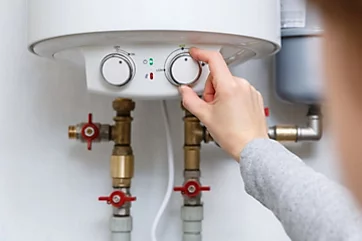Maintaining a water heater maintenance is crucial to ensure a steady supply of hot water and to avoid expensive repairs. Proper care involves understanding how to flush a water heater, which removes harmful sediment that builds up over time. Sediment accumulation affects efficiency and shortens the appliance’s life.
A clear plumbing maintenance checklist guides homeowners in performing routine inspections that help detect issues early.
Scheduling an annual water heater service allows professionals to conduct thorough checks, preserving the system’s health. By prioritizing maintenance, we extend water heater lifespan and maintain safety in our homes.
Effective Techniques to Flush Your Water Heater
Flushing your water heater is one of the most effective ways to remove accumulated sediment and improve its performance. Over time, minerals and debris settle at the bottom of the tank, leading to inefficiency and potential damage.
To flush the unit, start by turning off the power supply or gas valve. Connect a hose to the drain valve and direct it to a safe drainage area. Open the valve and allow the water to empty completely. Opening a hot water faucet inside your home will speed up draining by letting air into the system.
After draining, briefly open the cold water supply valve to flush out any remaining sediment. Repeat until the water runs clear. Close the drain valve, refill the tank, and restore power or gas.
Read more Water Heater Maintenance Checklist: Keep Yours Running Like New
Simple Steps to Extend Your Water Heater’s Lifespan
Regular maintenance plays a significant role in extending the life of your water heater. Adjusting the thermostat to 120 degrees Fahrenheit reduces strain on heating elements and limits mineral buildup. This temperature balances safety and efficiency.
Inspecting the anode rod annually protects the tank from corrosion. The anode rod attracts corrosive elements, preventing rust from damaging the water heater’s interior. Replacing a worn anode rod is essential to maintain tank integrity.
Testing the pressure relief valve ensures it operates correctly and prevents dangerous pressure buildup. A malfunctioning valve poses safety risks and may lead to premature failure.
Comprehensive Plumbing Maintenance Checklist for Water Heaters
A thorough plumbing maintenance checklist is essential to ensure your water heater and its connected systems remain in optimal condition. This checklist covers all critical points to prevent unexpected failures.
Begin by inspecting pipes and fittings for leaks or corrosion. Even minor leaks waste water and can cause property damage. Address these issues promptly.
Test the drain valve to confirm it opens and closes smoothly. A malfunctioning valve can interfere with how to flush a water heater and contribute to sediment problems.
Check the temperature and pressure relief valve annually to ensure it functions correctly. This safety device prevents dangerous pressure buildup inside the tank.
Look for any signs of rust or moisture near the base of the water heater. These symptoms may indicate early leaks or corrosion requiring immediate attention.
The Value of Annual Water Heater Service
Scheduling an annual water heater service is a vital part of maintaining your system’s reliability and efficiency. Professionals conduct detailed inspections that uncover hidden issues before they develop into major problems.
During the service, technicians drain and flush the tank to eliminate water heater sediment buildup. This improves heating efficiency and prevents premature wear.
Key components such as the thermostat, anode rod, and pressure relief valve receive thorough checks. Ensuring these parts function properly safeguards your water heater from leaks, corrosion, and safety hazards.
Read more 5 Signs Your Water Heater Needs Immediate Maintenance
Understanding and Managing Water Heater Sediment Buildup
Water heater sediment buildup occurs when minerals in the water settle at the bottom of the tank. This accumulation reduces heating efficiency and causes the unit to work harder.
Over time, sediment leads to noisy operation, increased energy consumption, and potential damage to the tank’s components. If left unaddressed, it may result in leaks or complete failure.
Preventing sediment buildup involves regular maintenance, especially knowing how to flush a water heater effectively. Utilizing softened water in hard water areas also helps minimize deposits.
Recognizing early signs such as rumbling noises or discolored water allows for prompt action, protecting your water heater and ensuring a longer service life.
Conclusion
Consistent water heater maintenance safeguards your home’s comfort and prevents costly repairs. Learning how to flush a water heater and following a detailed plumbing maintenance checklist protect your investment and improve efficiency.
Regular inspections and an annual water heater service identify issues early, helping to extend water heater lifespan. Addressing water heater sediment buildup promptly reduces energy waste and potential damage.
We encourage making these maintenance steps a regular priority. Doing so ensures reliable hot water and peace of mind for years to come.
FAQs
How often should I flush my water heater?
Flushing once every 12 months removes sediment buildup and maintains heating efficiency.
What temperature should I set my water heater to?
Setting the thermostat to 120 degrees Fahrenheit balances safety and energy savings.
Why is my water heater making rumbling noises?
Rumbling usually indicates water heater sediment buildup causing uneven heating.
What does an annual water heater service include?
It involves flushing the tank, inspecting components like the anode rod and valves, and checking for leaks or corrosion.
How does maintenance extend my water heater’s lifespan?
Routine care reduces wear, prevents corrosion, and keeps the system running efficiently longer.

